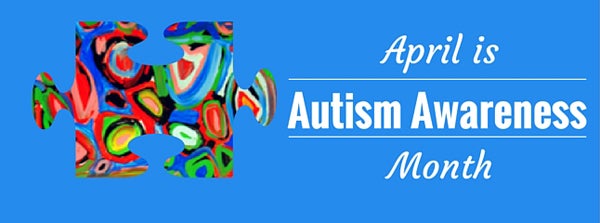
Autism is not a single diagnosis with a solid, fixed list of problems, but a spectrum of closely related disorders with a shared core of symptoms. Every child on the autism spectrum has some degree of issues with social interaction, empathy, communication, and behavior. The combination of symptoms varies tremendously from person to person and level of disability. In fact, two children with the same diagnosis may look very different when it comes to their behaviors and abilities.
However, no matter what your child’s unique needs are, it is important to ensure that they feel loved unconditionally and supported. In celebration of National Autism Month, please see below, a few general tips to help alleviate the day to day challenges and needs for your autistic child.
Be consistent. It is important to be consistent in the way you interact with your child so that you are better equipped to deal with challenging behavior. Children with Autism have a hard time applying what they’ve learned in one setting (such as school or the therapist’s office) to other environments, including your home. Creating consistency in your home is the best way to reinforce learning. Coordinate with your child’s therapist and teachers to find out what they are doing during the school day so that you can replicate the same techniques and tools at home.
Have a schedule. Along with consistency, it is very important to stick with a daily schedule and routine. All children benefit from a schedule but even more so with a child on the Autism spectrum. Try to schedule regular times for meals, therapy, school, and bedtime. Life is busy and noisy but it is always beneficial if you can keep disruptions to this routine to a minimum. If there is an unavoidable schedule change, try to prepare your child for it in advance by reminding them of the upcoming change.
Reward good behavior. “Catch your child doing something good.” Positive reinforcement is always appreciated no matter whether your child has autism or not – but this can go a long way with children with ASD. Praise your child when they act appropriately or learn a new skill, and be very clear and detailed about what behavior they’re being praised for. Also look for other ways to reward them for good behavior, such as giving them a sticker or letting them play with a favorite toy.
Hollywood embraces Autism. With “Sesame Street” featuring its first autistic character and Power Rangers featuring a new prominent character with autism in its latest movie, children with autism can now see themselves interact on the large screen. As Hollywood art imitates real life, allow your child to view this positive imagery of superheroes and loveable Muppet characters to help see themselves in a new way. New images of characters with autism allows those with ASD, and those without, to better understand the disability. This powerful reinforcement from Hollywood helps shape a positive perception and makes autistic symptoms less scary.
Create a safe home. A child with autism may have tantrums or other self-injurious behaviour. It is important to safety proof your house. In addition, your child will benefit from a private space in your home where your child can relax, feel secure, and be safe. This will involve organizing and setting boundaries in ways your child can understand. Visual cues can be helpful (coloured tape marking areas that are off limits, labelling items in the house with pictures). This helps identify areas that allow your child to be a child and play safely.
Make fun a priority. A child is still a child! And a child with Autism is still a child and needs to do more than go to school and therapy. It is imperative to have playtime and find ways to smile, laugh and feel relaxed. Many children with ASD are hypersensitive to light, sound, touch, taste, and smell. Some children with autism are “under-sensitive” to sensory stimuli. Working to better understand what motivates and is enjoyable for your child creates room to relax and have some fun. It is imperative to a child’s development to have happy memories. Take your autistic child to the museum, church or synagogue, the movies or even a ball game. Having your child interact, or even just observe helps to eliminate their own discrimination from doing “normal” child activities and fosters inclusion. If scheduled for even just a short amount of time, both parent and child will have new joyous memories.
As we honor National Autism month and all of those who are diagnosed with Autism Symptom Disorder, we acknowledge the challenges of having loved ones with ASD in our lives. Understanding your child’s disability, having the love and support of family and community and following these tips will help those children with autism to thrive and succeed as they grow and become important contributors in our diverse society.
Charles A. Archer, CEO, The THRIVE Network